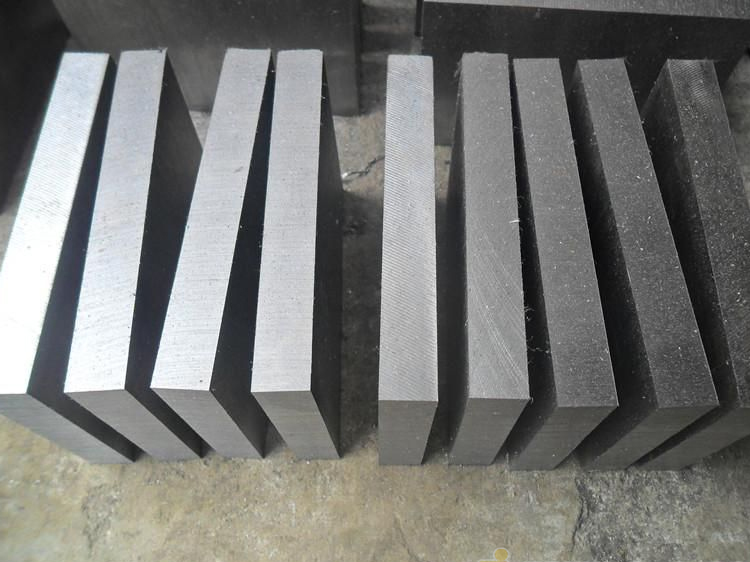1. Fold to edit the purpose of this paragraph
H13 die steel is used to manufacture forging dies with high impact load, hot extrusion dies, precision forging dies; die-casting dies for aluminum, copper and their alloys.
It is the introduction of H13 air quench hardening hot work die steel from the United States. Its properties and uses are basically the same as those of 4Cr5MoSiV steel, but because of its higher vanadium content, its medium temperature (600 degrees) performance is better than 4Cr5MoSiV steel. It is a representative steel grade with a wide range of uses in hot work die steel.
2. Features
Electroslag remelted steel, the steel has high hardenability and thermal crack resistance, the steel contains a higher content of carbon and vanadium, good wear resistance, relatively weakened toughness, and good heat resistance. At higher temperatures, it has better strength and hardness, high wear resistance and toughness, excellent comprehensive mechanical properties and high tempering resistance stability.
3. The chemical composition of steel
H13 steel is a C-Cr-Mo-Si-V steel, which is widely used in the world. At the same time, many scholars from various countries have conducted extensive research on it and are exploring the improvement of chemical composition. Steel is widely used and has excellent characteristics, mainly determined by the chemical composition of steel. Of course, the impurity elements in the steel must be reduced. Some data show that when the Rm is 1550MPa, the sulfur content of the material is reduced from 0.005% to 0.003%, which will increase the impact toughness by about 13J. Obviously, the NADCA 207-2003 standard stipulates that the sulfur content of premium H13 steel should be less than 0.005%, while the sulfur content of superior should be less than 0.003%S and 0.015%P. The composition of H13 steel is analyzed below.
Carbon: American AISI H13, UNS T20813, ASTM (the latest version) H13 and FED QQ-T-570 H13 steel have a carbon content of (0.32~0.45)%, which is the most carbon content of all H13 steels. Wide. The carbon content of German X40CrMoV5-1 and 1.2344 is (0.37~0.43)%, and the carbon content range is narrow. In German DIN17350, the carbon content of X38CrMoV5-1 is (0.36~0.42)%. The carbon content of SKD 61 in Japan is (0.32~0.42)%. The carbon content of 4Cr5MoSiV1 and SM 4Cr5MoSiV1 in my country’s GB/T 1299 and YB/T 094 is (0.32~0.42)% and (0.32~0.45)%, which are the same as SKD61 and AISI H13, respectively. In particular, it should be pointed out that the carbon content of H13 steel in the North American Die Casting Association NADCA 207-90, 207-97 and 207-2003 standards are specified as (0.37~0.42)%.
H13 steel containing 5% Cr should have high toughness, so its C content should be maintained at a level that forms a small amount of alloy C compounds. Woodyatt and Krauss pointed out that on the Fe-Cr-C ternary phase diagram at 870℃, the position of H13 steel is better at the junction of the austenite A and (A+M3C+M7C3) three-phase regions. The corresponding C content is about 0.4%. The figure also marked the increase in the amount of C or Cr to increase the amount of M7C3, and the A2 and D2 steels with higher wear resistance for comparison. It is also important to maintain a relatively low C content to make the Ms point of the steel take a relatively high temperature level (the Ms of H13 steel is generally described as 340℃), so that the steel can be quenched to room temperature. Obtain the alloy C compound structure mainly composed of martensite plus a small amount of residual A and the residual uniform distribution, and obtain a uniform tempered martensite structure after tempering. Avoid transforming too much retained austenite at the working temperature to affect the working performance or deformation of the workpiece. These small amounts of retained austenite should be completely transformed in the two or three tempering processes after quenching. By the way, it is pointed out here that the martensite structure obtained after quenching of H13 steel is lath M + a small amount of flake M + a small amount of residual A. The very fine alloy carbides precipitated on the lath M after tempering. Domestic scholars have also done some work
Post time: Dec-14-2021

